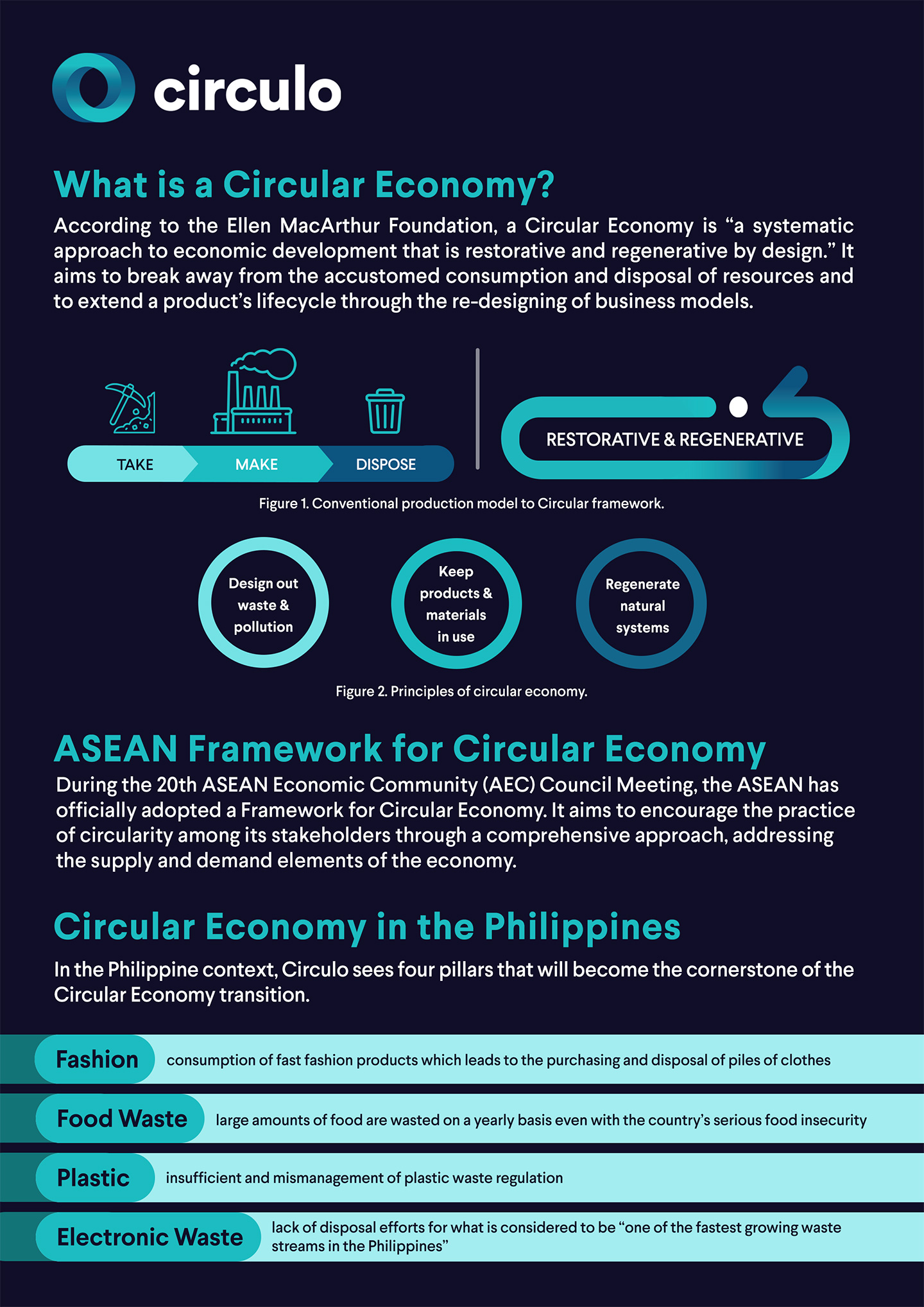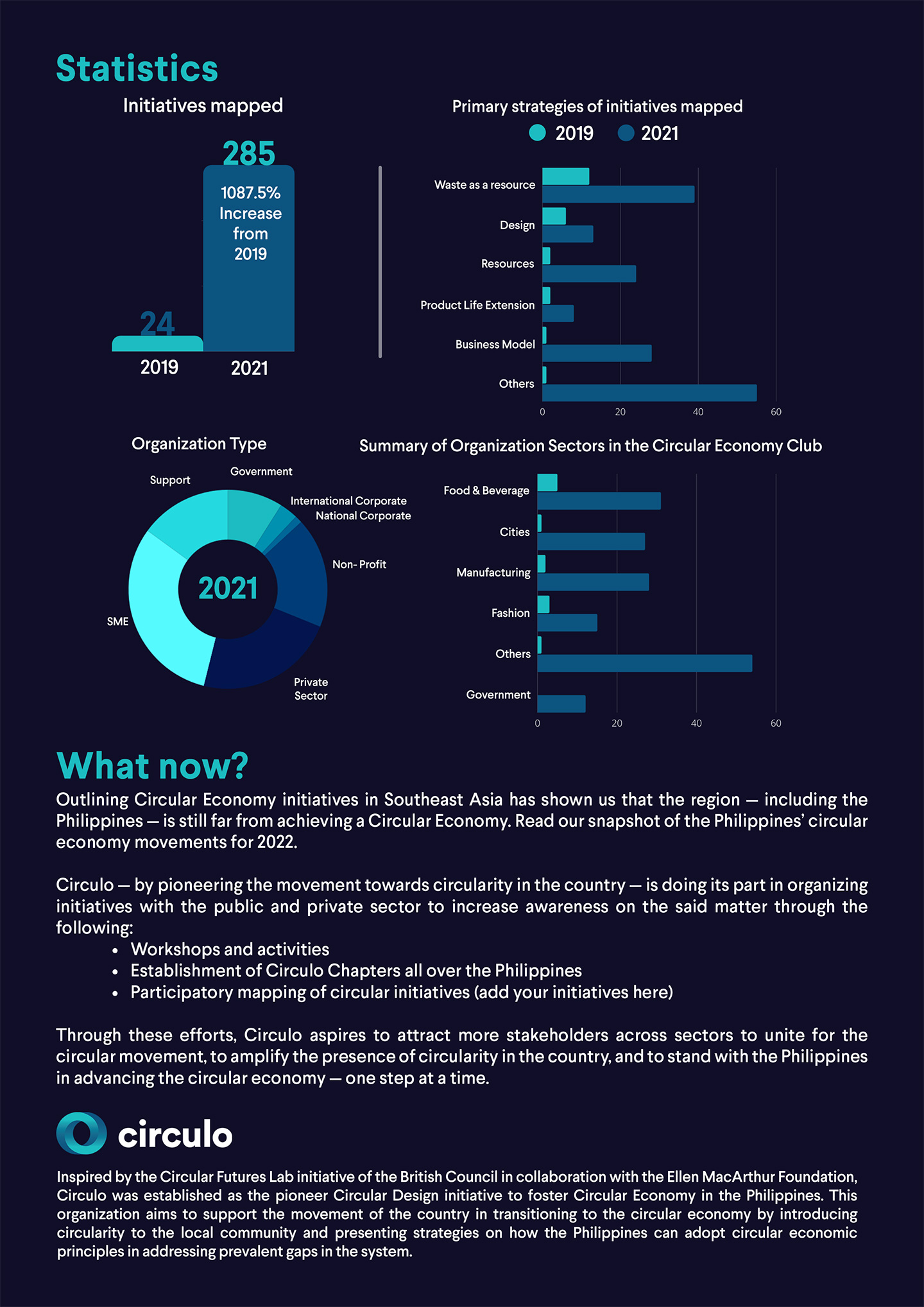MANILA, PHILIPPINES — Pioneering circular design initiative Circulo has published a new report which seeks to generate a snapshot of the Philippines’ current position and progress towards the circular economy. The report attempts to present the trends of the circular economy in the Philippines to encourage further research and assessments on the matter. Through this document, Circulo aspires to shape the conversation on this urgent transition to a thriving circular economy.
Outlining circular economy initiatives in Southeast Asia has shown us that the region — including the Philippines — is still far from achieving a circular economy. There are still a lot of barriers that are needed to be broken down in order for this economic model to prosper within society. This stresses the importance of the roles of both producers and consumers in championing the circular economy, thereby needing more comprehensive strategies to tackle matters at hand.
The idea of a circular economy has been around for quite a while in Asia, but in recent years, the Association of Southeast Asian Nations (ASEAN) has expressed its dedication in promoting this model of circularity to its member nations. It is imperative to sustain the growth potential of the region as well as to offset the contribution of various countries — including the Philippines — to the world’s total waste buildup.
With both the public and private sectors affected, the country has continually established initiatives to advance the country’s overall progress towards a more circular economy. However, in Circulo, there are 4 Pillars in the economy that the country has to tackle in order to achieve circularity:
- Fashion consumption of fast fashion products leads to the purchasing and disposal of piles of clothes.
- Food Waste Large amounts of food are wasted on a yearly basis even with the country’s serious food insecurity.
- Plastic Insufficient and mismanagement of plastic waste regulation.
- Electronic Waste Lack of disposal efforts for what is considered to be “one of the fastest-growing waste streams in the Philippines.”
Compared to the previous report done by Circulo, the number of circular initiatives in the country grew dramatically in the past two years. Listed initiatives in the Circular Economy Club database showed that the 24 circular economy initiatives mapped in 2019 have greatly increased to 285 as of the last circular mapping. This means that the need for circular mapping is becoming more necessary to keep track of developments in the country as the number of circular initiatives rises.
Download Circulo’s full report here.
CREDITS:
Lead researcher Mikaela Limiac
Graphics Johanna Marie F. Drece
Circulo Team Carlo Delantar, Karl Satinitigan,
Colin Dancel, Agnes Boncodin and Noelleene Bañez










